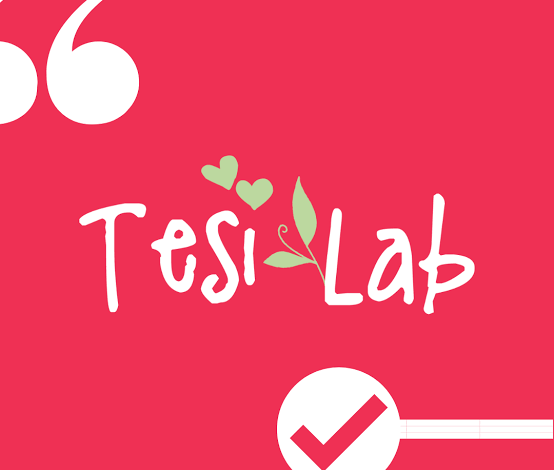
Introduction to Tesilab
Tesilab Founded in 2021, Tesilab has quickly emerged as a cornerstone in the realm of innovative materials and advanced technologies. Situated at the intersection of research, development, and application, Tesilab is driven by a mission to revolutionize industries through the creation and utilization of cutting-edge materials. The organization’s objectives are grounded in fostering sustainability, enhancing performance, and supporting the efficient use of resources across various sectors, including aerospace, automotive, electronics, and construction.
The inception of Tesilab was marked by a commitment to addressing the pressing challenges faced by modern industries, particularly those related to environmental sustainability and material efficiency. With an expert team of scientists, engineers, and industry professionals, Tesilab harnesses the latest technological advances to develop materials that not only meet but exceed conventional industry standards. By focusing on the properties of innovative materials, Tesilab aims to contribute to the development of products that are not only high-performing but also environmentally responsible.
At the heart of Tesilab’s endeavors lies the belief that innovation in material science is pivotal to advancing technology across various fields. The organization actively collaborates with academic institutions, governmental bodies, and private enterprises to spearhead initiatives geared towards discovering and optimizing new materials. This collaborative approach ensures that Tesilab remains at the forefront of technological advancements while aligning its projects with the evolving needs of the marketplace.
In this context, Tesilab is not merely a participant but a leader in the pursuit of innovative materials that promise to redefine modern technology. By providing solutions that embrace both innovation and sustainability, Tesilab is setting new benchmarks in material science, signaling a significant leap towards a more efficient and sustainable future.
Key Innovations Unveiled by Tesilab
Tesilab has emerged as a significant player in the realm of innovative materials and technology, unveiling groundbreaking advancements that have the potential to revolutionize various industries. One of the most notable innovations is the development of a lightweight, high-strength composite material. This material, composed of bio-based fibers and resins, offers remarkable durability while maintaining an exceptionally low weight. Its application spans sectors such as aerospace, automotive, and construction, where reducing material weight can lead to enhanced fuel efficiency and lower emissions.
Another noteworthy innovation is Tesilab’s smart polymer technology. These polymers possess the unique ability to change their properties in response to external stimuli such as temperature, light, or moisture. The potential applications for smart polymers are vast, including in the fields of medical devices that can adapt to the body’s needs or packaging materials that indicate product freshness or safety. This technology not only improves functionality but also contributes to sustainable practices, as these materials can be designed to minimize waste and energy consumption.
Additionally, Tesilab has invested in the creation of advanced energy storage solutions. By developing new battery technologies utilizing nanomaterials, Tesilab aims to enhance the efficiency and lifespan of energy storage systems. Such innovations are pivotal in addressing the growing demand for renewable energy solutions and electric vehicles, as efficient energy storage is essential for balancing supply and demand in these applications. The potential impact of these advancements on reducing reliance on fossil fuels cannot be overstated.
Overall, the key innovations pioneered by Tesilab reflect a commitment to advancing materials technology that meets modern demands. Each of these developments not only showcases potential applications but also illustrates how they could fundamentally benefit industries and society, further pushing the boundaries of what is possible with innovative materials.
The Science Behind Tesilab’s Materials
The development of innovative materials at Tesilab is anchored in a robust scientific framework that involves interdisciplinary collaboration among scientists and engineers. This collaboration ensures that innovative concepts are brought to reality through rigorous research methodologies and advanced technological applications. At the heart of this process lies the understanding of material science, which focuses on the properties, performance, and applications of various substances. Through this foundational knowledge, Tesilab is able to explore new avenues in material creation and optimization.
One of the critical scientific principles underpinning Tesilab’s materials is the manipulation of molecular structures. By tailoring these structures at the nanoscale, researchers can significantly alter the physical and chemical properties of materials, making them more suitable for a variety of applications. For instance, the development of lightweight composites with enhanced strength is achieved through the strategic arrangement of molecules and atoms. This not only increases performance but also diversifies the materials’ utility across numerous industries, such as aerospace and automotive engineering.
In addition to molecular manipulation, Tesilab employs cutting-edge research methodologies, including computational modeling and simulation techniques, to predict the behavior of materials under different conditions. This allows scientists to make informed decisions about the feasible deployment of new materials. Moreover, the iterative process of design, test, and analyze ensures that each material is thoroughly vetted prior to its application in real-world scenarios. The emphasis on collaboration fosters an environment where ideas are consistently exchanged, leading to innovative breakthroughs that redefine traditional materials science.
Overall, Tesilab’s commitment to merging scientific principles with practical engineering solutions exemplifies a forward-thinking approach aimed at pushing the boundaries of material innovation. By understanding and harnessing the science of materials, Tesilab is poised to lead the way in developing solutions that address contemporary challenges across diverse sectors.
Industry Applications of Tesilab Innovations
As industries continue to evolve, the adoption of innovative materials and technologies has become imperative for sustaining competitive advantage. Tesilab stands at the forefront of this evolution, providing cutting-edge solutions that significantly enhance performance and efficiency across various sectors, including automotive, aerospace, and healthcare. Each of these industries demonstrates distinct needs and challenges that Tesilab’s innovations adeptly address.
In the automotive sector, for instance, manufacturers are increasingly integrating lightweight, high-strength materials developed by Tesilab into their designs. By utilizing these advanced composites, automakers can reduce the weight of vehicles, which directly contributes to improved fuel efficiency and reduced emissions. A notable case study involves a leading automaker’s adoption of Tesilab’s proprietary material, which not only decreased the vehicle’s weight by 20% but also enhanced crash performance, demonstrating that innovation leads to safer and more environmentally friendly vehicles.
The aerospace industry benefits similarly from Tesilab’s innovations. Aircraft manufacturers are working closely with Tesilab to develop materials that can withstand extreme conditions while minimizing weight. One prominent example includes a commercial airline that incorporated a new generation of thermoplastic composites in its aircraft design. These materials not only allowed for a 15% increase in payload capacity but also significantly reduced maintenance costs due to their superior durability and resistance to fatigue.
Moreover, the healthcare sector is experiencing a transformation through the application of Tesilab’s innovative materials in medical devices. The development of biocompatible polymers has led to the creation of more effective implants and prosthetics. A successful case involves a healthcare provider that utilized Tesilab materials to produce a next-generation hip implant, which resulted in reduced rejection rates and improved patient outcomes. Such applications highlight how the advancements in material science are pivotal in enhancing quality of life through innovative healthcare solutions.
In conclusion, the integration of Tesilab innovations across diverse industries exemplifies the profound impact of modern material science and technology. The successful applications illustrate the potential for continued advancements that can redefine industry standards, ultimately fostering a future driven by innovation and efficiency.
Sustainability Efforts at Tesilab
As a prominent player in the materials and technology sector, Tesilab recognizes the significant role that sustainability plays in shaping a more environmentally responsible future. The company’s commitment to sustainability is evident through its innovative production methods, which prioritize reducing the environmental impact associated with material synthesis and application. Adopting cutting-edge practices, Tesilab aims to minimize waste and reduce energy consumption across its manufacturing processes.
One notable initiative involves the use of biodegradable materials, which play a crucial role in easing concerns about pollution and landfill waste. By focusing on renewable resources, Tesilab is not only contributing to the circular economy but also ensuring the longevity of raw materials for future generations. Furthermore, the company is investing in research and development to improve the efficiency of their materials, allowing for enhanced performance without compromising ecological integrity.
Tesilab also actively pursues collaborations with environmental organizations and academic institutions to foster knowledge exchange about sustainable practices. These partnerships are designed to drive innovation in the field of eco-friendly materials, promoting research aimed at reducing the carbon footprint associated with product life cycles. Such collaborative efforts help reinforce Tesilab’s role in leading the transition towards responsible manufacturing processes.
In addition, Tesla’s commitment to sustainability extends to their supply chain management, where they strive to ensure that all suppliers adhere to eco-friendly practices. By performing rigorous assessments and fostering transparency, Tesilab aims to mitigate environmental risks throughout their operations. This holistic approach not only reflects Tesilab’s dedication to sustainability but also positions the company as a frontrunner in eco-conscious innovation within the materials and technology sector.
Collaborations and Partnerships
Tesilab has established a range of strategic partnerships and collaborations that are pivotal in advancing its vision of innovative materials and technology. These alliances involve a multitude of stakeholders, including research institutions, industry leaders, and organizations across various sectors. By leveraging the collective expertise of these partners, Tesilab is able to push the boundaries of material science while accelerating the development process.
One notable collaboration is with renowned universities that specialize in materials science and engineering. This partnership enables Tesilab to engage in cutting-edge research, thereby facilitating the exploration of new materials that can be tailored for specific applications. Through joint research initiatives, both Tesilab and the academic institutions gain access to shared resources and knowledge, which enhances their overall research capabilities.
Additionally, Tesilab has formed alliances with several industry leaders who are at the forefront of technology innovation. These partnerships are aimed at integrating advanced materials into existing manufacturing processes, which can lead to significant improvements in efficiency and product performance. Collaborative projects often focus on real-world challenges, allowing Tesilab to apply its research in practical contexts, thereby producing actionable insights and tangible outcomes.
The aim of these partnerships extends beyond mere product development; they also encompass knowledge exchange and capacity building. By working together, Tesilab and its partners cultivate an ecosystem that fosters innovation and adaptability in a rapidly evolving market. The results of these collaborations can be seen in the successful prototype developments and the subsequent launch of novel products that meet emerging industry demands.
In summary, the strategic collaborations formed by Tesilab illustrate its commitment to innovation in materials and technology. Through these partnerships, Tesilab not only enhances its research and development capabilities but also plays a crucial role in shaping the future of the industry.
Future Trends in Material Science and Technology
The field of material science is constantly evolving, with significant advancements and innovations emerging regularly. As Tesilab continues its research and development efforts, several future trends are expected to shape the industry. One of the most notable trends is the increasing integration of nanotechnology. By manipulating materials at the atomic or molecular level, researchers can create substances with unique properties, leading to breakthroughs in various applications, including medicine, electronics, and energy storage.
Another anticipated trend is the development of sustainable materials. With environmental concerns rising worldwide, the need for eco-friendly materials is becoming more pressing. Tesilab is poised to lead the charge in researching bio-based polymers and recyclable composites that reduce waste and dependence on fossil fuels. The focus on sustainable innovation not only addresses environmental challenges but also caters to a growing consumer demand for greener products.
Furthermore, the use of smart materials is gaining traction. These materials possess the ability to respond to external stimuli, such as temperature or pressure changes, making them ideal for applications in aerospace, automotive, and healthcare sectors. Tesilab’s commitment to integrating smart technologies into their material development is expected to enhance performance and functionality across various industries.
Lastly, the trend of digitalization in material science cannot be overlooked. Employing advanced software tools and machine learning algorithms can accelerate the discovery and design of new materials. Tesilab plans to incorporate computational modeling and simulations in their workflows, allowing for more efficient exploration of material properties and behaviors. This approach not only reduces development time but also fosters innovative solutions that may have previously been overlooked.
In conclusion, the future of material science and technology is bright, with Tesilab positioned to embrace and drive these trends. Their focus on nanotechnology, sustainable materials, smart innovations, and digitalization will ensure they remain at the forefront of the industry, paving the way for groundbreaking advancements that enhance societal capabilities and address pressing global challenges.
Challenges and Solutions in Material Development
Material development is an intricate and dynamic process, particularly for innovative organizations like Tesilab. Among the foremost challenges are technological hurdles. Advancements in material science often require sophisticated techniques and analytics to explore new possibilities. The integration of these advanced technologies can be both costly and time-consuming, at times slowing down the development process. Moreover, the need for continuous innovation necessitates constant investment in research and development to stay ahead of the competition.
Regulatory challenges present another significant barrier to effective material development. Materials must comply with stringent regulations for safety and environmental impact during production and end-use. This requires substantial effort in ensuring that all developments align with legal standards, which can extend timelines and increase costs. As a solution, Tesilab collaborates with regulatory authorities early in the development process to ensure all materials meet necessary compliance standards from the outset, thereby mitigating potential delays.
Market-related challenges also abound in the realm of innovative materials. Consumer preferences can shift rapidly, leaving organizations like Tesilab at risk of developing materials that may not meet market demands. To navigate this, Tesilab employs market analysis and consumer feedback mechanisms. This ensures that their material innovations not only align with current trends but are also adaptable to future changes. By maintaining an agile approach to product development, Tesilab can pivot as necessary to meet evolving customer needs.
In essence, while the road to material development may be fraught with challenges, strategic solutions—ranging from early regulatory collaboration to market analysis—enable Tesilab to navigate this landscape effectively. The integration of technology, adherence to regulations, and responsiveness to market dynamics lay a robust foundation for future innovations in materials.
Conclusion
In recent years, Tesilab has emerged as a significant player in the realm of innovative materials and technology, paving the way for transformative changes across various industries. The impact of Tesilab can be observed through its commitment to research and development, which has led to breakthroughs in materials science that will reshape the future. By focusing on sustainable solutions and advanced fabrication techniques, Tesilab has not only catered to current market demands but also anticipated the needs of future sectors.
The innovative materials developed by Tesilab are notable for their versatility and potential applications. For instance, the introduction of lightweight, high-strength composites offers substantial benefits to the aerospace and automotive industries, significantly enhancing fuel efficiency and performance. Additionally, Tesilab’s contributions to nanotechnology have opened new avenues for medical applications, paving the way for more effective drug delivery systems and advanced diagnostic tools. These advancements underscore the laboratory’s pivotal role in fostering technological evolution.
Furthermore, the ongoing research initiatives at Tesilab emphasize the necessity of collaboration between academia and industry. By partnering with leading research institutions and businesses, Tesilab has been able to accelerate the translation of innovative concepts into market-ready solutions. This synergy not only bolsters economic growth but also positions Tesilab at the forefront of global technological advancements.
Ultimately, Tesilab’s impact extends beyond mere material innovation. It embodies a vision for a more sustainable future, reflecting the urgent need for responsible resource management and eco-friendly manufacturing practices. As the laboratory continues to push the boundaries of what is possible in materials science, it will undoubtedly play a critical role in shaping the trajectory of technology for years to come
.YOU MAY ALSO READ



